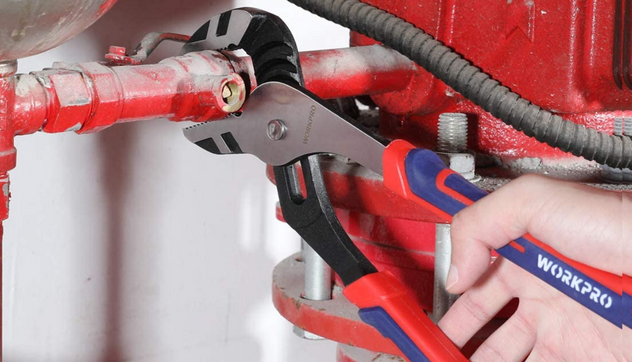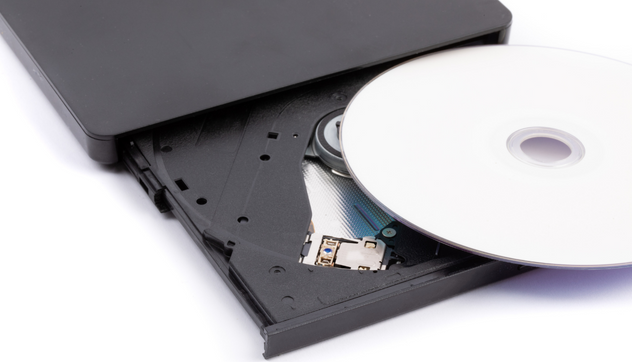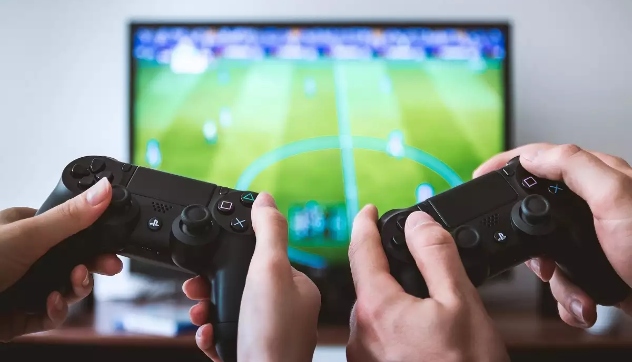The Best Qi Wireless Charging Power Bank of 2023
With wireless charging becoming more popular, Qi wireless charging banks have become essential accessories.

Qi wireless charging banks are the true embodiment of cutting the cord. These innovative power banks provide a reliable way to charge your devices without the need for bulky adapters and messy cords. While wireless power banks may charge a tad slower than wired connections, they are an absolute convenience, especially on the go. All you have to do is snap your phone or watch onto the power bank. In this buying guide, we will explore the best qi wireless charging power banks on the market, considering factors like capacity, charging speed, affordability, and more. So, whether you’re a frequent traveler or simply want a more streamlined charging experience, we have you covered.
Everything We Recommend
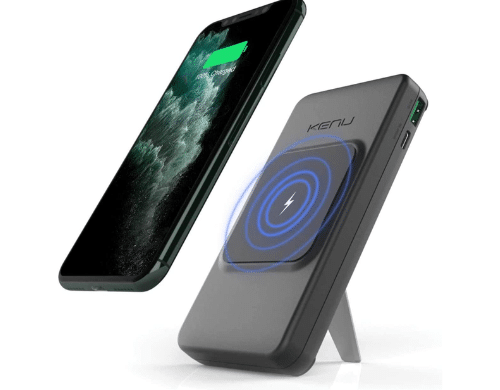
1. Best Product
Kenu BingeBank Qi Power Bank
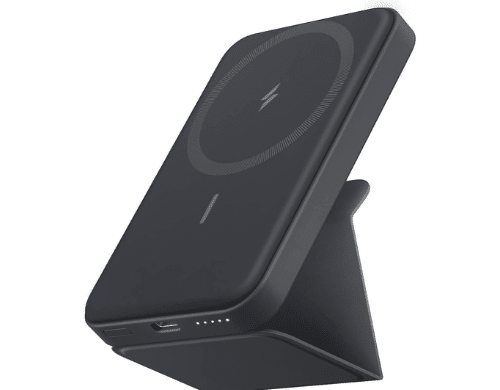
2. Runner Up
Anker 622 MagGo Magnetic Battery

3. Cost Effective
HaloLock™ 5,000 mAh Wireless Power Bank
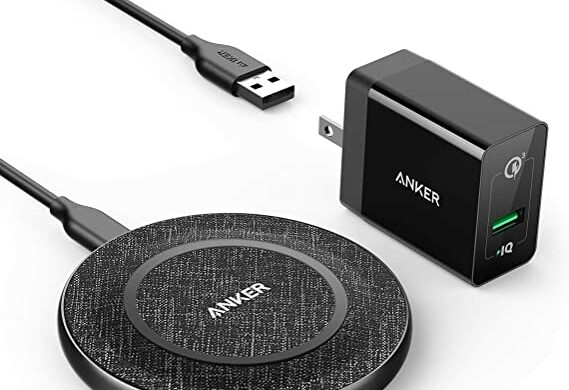
4. Almost Made the Cut
Anker Wireless Charger PowerWave
1. Best Product

1. Best Product
Kenu BingeBank Qi Power Bank
This product removes the stress of searching for an outlet, no matter where you are or what device you use.
Specifications
- Package Dimensions
- 6.3 x 4.17 x 1.26 inches
- Item Weight
- 12.7 ounces
- Batteries
- 1 Lithium Ion battery required (included)
- Battery Capacity
- 10000 Milliamp Hours
- Connector Type
- Lightning, USB Type C
Pros
Use While You Charge
Nanosuction Grip
Three Ways to Charge
Compatible with Many Devices
Cons
USB-A port doesn't fast charge
Heavy in Hand
Who It's For
BingeBank by Kenu is a feature-rich qi wireless charging power bank. It comes with a USB 3 and USB-C port alongside the wireless charging pad, making it super useful for anyone with a range of devices.
Why It's Great
With a 10,000 mAh capacity, this power bank will keep a number of your devices powered throughout the day. The nano suction charging pad ensures a good grip, while the metallic kickstand allows you to use your phone in landscape or portrait mode.
Potential Flaws
The BingeBank isn't the quickest Qi power bank. However, if you use it at your desk or overnight, you won't notice the difference in wireless charging speed. It also has a plastic body, which, despite being durable, can break. When not in use, the kickstand lies flat on the back of the battery. However, in portrait mode, the hinge curves from 20 degrees off perpendicular to 40 degrees.
Other Features
Besides wireless charging, the power bank supports wired connections. The USB-C and USB 3.0 ports allow you to power other devices such as laptops power or phones without qi wireless charging technology. Even better, it can power small devices like smartwatches and earphones with a double click.
2. Runner Up

2. Runner Up
Anker 622 MagGo Magnetic Battery
Anker's new Mini Cell technology reduces the overall battery size without compromising power and charging efficiency.
Specifications
- Item Dimensions
- 4.13 x 2.62 x 0.5 inches
- Connector Type
- USB Type C
- Item Weight
- 5 ounces
- Batteries
- 1 Lithium Polymer battery required (included)
- Recharging Time
- ~2 Hours (12W)
- Voltage
- 5 Volts
Pros
0.5 inches thin
24 Month Warranty
Up to 7.5W maximum power
Helpful charging indicators
Cons
This Pick Cannot Manually Turn Off
This Pick Does not support charging two devices at once
Power Adapter Not Included
Who It's For
The Anker 622 Magnetic battery is ideal for iPhones that support Magsafe charging. You can also use it to power older phones and Android phones using a Magsafe-compatible case or a magnetic Magsafe adapter.
Why It's Great
The Anker 622 magnetic battery has a built-in magnetic flap that transforms it into a stand. When charging with a USB-C to Lightning cable, your iPhone will charge at 12 watts instead of the normal 5 watts. While that's not as fast as a USB-C power adapter that delivers 20 watts, it's faster than 5 watts.
It has a powerful magnet that snaps magnetically to ensure an aligned and effective charge and a flexible kickstand that keeps your iPhone upright for comfortable viewing. The end product is a snazzy, thin, and compact device that is about 0.5 inches thick. This makes it incredibly easy to answer calls, take selfies, and do other things with just one hand.
Potential Flaws
Some users have complained about this wireless charger overheating, which causes the phone's battery to overheat. In rare cases, the phone fails to attach to the wireless magnetic pad, making mobility a major concern.
Other Features
Amazingly, Anker's revolutionary Mini Cell technology decreases the total battery size without sacrificing power or charging efficiency. This allows for mobility and convenience while still providing power for extended usage of up to 17 hours. Thanks to its modest size, it fits well in the palm. For worry-free charging, Anker's proprietary MultiProtect technology includes incredibly sophisticated safety features such as temperature management and overload prevention, among others.
3. Cost Effective

3. Cost Effective
HaloLock™ 5,000 mAh Wireless Power Bank
Our budget pick sports a 2-way USB-C port to charge a power bank or recharge your phone via cable without costing you a fortune.
Specifications
- Item Dimensions
- 3.9 x 2.52 x 0.67 inches
- Connector Type
- USB Type C
- Item Weight
- 5.5 ounces
- Magnetic Strength
- 1,000 g
- Material
- Aluminum Alloy
- Battery Capacity
- 5000 Milliamp Hours
Pros
Adjustable built-in kickstand
Allows for passthrough charging
Magnets Align Phone to Charger
12 Month Warranty
Cons
Bulky Design
No Fast Charging
Who It's For
This pocket-friendly, both in size and price, offers all the benefits of a regular MagSafe-style wireless charger. With the HaloLock magnetic ring, the ESR HaloLockTM will charge your phone while remaining aligned.
Why It's Great
This Qi portable charger uses Magsafe magnetic technology, which is superbly embedded. As if that weren't enough, it also takes care of your phone's temperature by including a heat-dissipating metal frame. This frame draws away heat, keeping the power bank and your phone cool.
Potential Flaws
The device, however, does not support simultaneous double charging. There is no way to charge the power bank while using it; you have to use a MagSafe or a wired connection to charge it.
Other Features
Besides charging your iPhone, this package also features an adjustable stand that offers a convenient viewing experience. Charging starts as soon as you attach your phone. When your phone is fully charged and you only need the kickstand, you can turn off MagSafe charging. It can easily fit in your pocket or bag since it's easy to carry.
4. Almost Made the Cut

4. Almost Made the Cut
Anker Wireless Charger PowerWave
Offering charge for smartphones and AirPods, this pick offers a wide range of potential.
Specifications
- Product Dimensions
- 3.54 x 3.54 x 0.55 inches
- Item Weight
- 5.3 ounces
- Connector Type
- USB Type C, USB Type A
Pros
Aluminum base designed for better heat dissipation
10% faster than other brands
LED Indicator Light
Delivers charge through cases
Cons
Charging Mode and Wattage depends on Phone Compatibility
Who It's For
Anker boasts a wireless charger that is 10% faster than other brands, with an 11W charging speed for Google Pixel phones and a 10W charging speed for Samsung products. Including the cord and charger in the box, you can begin charging immediately with the USB-A to USB-C cord. There is no need for concern if you keep your products safe in a case, as this pick delivers charge-through protective cases up to 5mm thick.
Why It's Great
This pick is compatible with multiple smartphones and wireless earbuds and includes a wall adapter for outlet charging. Due to being made with an aluminum base for better heat dissipation and anti-slip silicone pads to keep your devices in place, this charger boasts an impressive degree of consideration. As well as the previously mentioned features, the PowerWave offers foreign object detection and overvoltage protection to keep you and your devices safe.
Potential Flaw
Testing demonstrated a disappointing charging speed, especially for a product so prideful of its fast charging capabilities. This issue was further not helped by the product needing to be unplugged and replugged to ‘wake’ it up. It may seem minimal, but these factors made charging our devices much more work than other options.
Other Features
This pick sports an LED indicator light to inform you of various features in use. For example, a solid blue indicates an active charging of a device, with a solid blue for three seconds demonstrating a power connection. A flashing blue light signals a metal obstruction impacting the charge, and a flashing green light signals an incompatible adapter or cable. This pick also comes with an 18-month warranty.
Who This Is For
How many times have you made a purchase that you regretted later? Remember that feeling? If you want to avoid it, you probably know that research is fundamental before purchasing. This review is for you if you don’t have the time.
A power bank is helpful if your phone runs out of battery during the day or if you often worry that it might be because the charger can provide energy. These Qi- or MagSafe-enabled power banks serve two purposes. The majority not only features a variety of USB outputs but can also wirelessly charge a compatible phone. By picking one of these power banks, you may save money by not having to buy two separate charging devices.
What is a Qi wireless charging power bank?
The Qi (pronounced “chee”) standard is used for transmitting wireless energy. Using this format, which the Wireless Power Consortium (WPC) maintains, all devices can charge wirelessly, just as USB and Bluetooth have standardized data transmission.
Wireless charging wouldn’t be possible without a standard like Qi. Imagine a world where every smartphone would have its own unique cable instead of Micro-USB, USB-C, or Lightning. You’d have to deal with that if there wasn’t a Qi standard.
How many and which devices can I charge with my Qi wireless charging power bank?
Most iPhones and Android phones, for example, have wireless charging built in. There is nothing better than magnetic wireless power banks when it comes to wireless power banks. These power banks attach magnetically to your phone. Furthermore, the Qi wireless charger can be used with all devices since it’s a universal standard. Thus, the wireless charging mechanics for both Androids and iPhones are similar. It’s possible to charge all your devices with the same charging mat. When you place your phone on the mat, it begins charging automatically.
Can you use a Qi wireless charging power bank while charging it?
If your power bank has a pass-through function, you can charge it while charging another device. You can charge your phone from a wall outlet or power bank without risk. It will, however, take much longer for your phone to charge if you use it while it is charging. This function should only be used if there are no other options since it can damage the battery.
Why You Should Trust Us
Our writers constantly strive to give unbiased editorials. We follow strict guidelines when testing items for our in-depth reviews, purchasing recommendations, and group tests to ensure accuracy and consistency across the board. We take pride in our honesty, independence, and topic expertise.
Our review team has extensive knowledge of the items they cover. Each device is tested under the same settings, against the same standards, and with the same configuration to ensure precise and uniform results.
How We Picked
Size
One of the most crucial considerations when buying a Qi wireless power bank is its size. You may read more about the product’s dimensions and size in the product information. Because a product’s size might vary depending on the maker, it’s a good idea to be careful about which one best fits you.
Weight
Your Qi wireless charger should be portable, so you can easily move it around. You shouldn’t have to bear the weight of the power bank you select. The perfect wireless power bank should be compact and lightweight. With increasing mAh capacity, weight typically increases. Although a model with 20,000 mAh can seem like a practical choice, it might be too big for your pocket or purse. A pocket-sized model with at least 6000 to 10,000 mAh is ideal for a one-day music festival, picnic, or night out. If you’re going on a long hike, you may need a larger model, but they’re usually too big for most pockets.
Portability
Your portable charger might cause more trouble than it will solve if you pick the wrong size. Would you still want to use the wireless portable charger if it were too large to fit in your pocket or too heavy to carry around? You should consider a lightweight power bank with a stylish appearance if you always bring the portable charger with you everywhere you go.
Number of ports
Options for porting differ across units. How is the port on your device? How frequently will you charge them? Do you anticipate using two or more devices at once to recharge? Extra USB ports make it easier to charge several devices simultaneously. When friends’ phones run out of power, you may lend them your portable battery pack. A decent USB power bank, however, doesn’t require too many ports; 2 or 3 ports are ideal as long as they support a variety of devices.
Port type
Apart from the wireless charging option, you need to choose a power bank with the appropriate number of output ports to match the number of devices you want to charge at any given moment since power is useless if you can’t access it. Options for porting differ across units. How is the port on your device? How frequently will you bill them? Do you anticipate using two or more devices at once to recharge?
Charging speed
While charging speeds were once a major disadvantage of portable wireless chargers, they are now relatively fast. Many wireless portable chargers have a wattage of 10W, 9W, 7.5W, 5W, etc. Others have a wattage of up to 15 W. Ensure the wireless portable charger you purchase supports equal or higher wattages.
Supported devices
Your power bank should offer as many connectivity options as possible. During emergencies, power banks can be a lifesaver. Since they may be used for multiple devices, they should be compatible with all regular gadgets and be able to charge them all simultaneously. If you switch from an iPhone to a Samsung device and your wireless power bank is not compatible with your Samsung device, you may end up with a useless power bank. Consider it an investment and get a power bank with enough connectivity possibilities.
Power
Find out how much power you need. If you want your wireless charger to charge as quickly as possible, ensure it has enough power to meet your needs. While most phones can only absorb 7.5 watts of power, the latest Qi standard allows 15 watts. The best way to future-proof your purchase is to buy a charger that can handle 15 watts.
Battery life
The first thing that springs to mind when thinking about a power bank is its capacity. As with any battery, the mAh symbol stands for milliampere hours, which is how a power bank’s capacity is expressed. The number of times a power bank can recharge your smartphone or tablet increases with capacity.
It is recommended that you buy a power bank with a capacity that is greater than the actual capacity of your phone’s battery. So, if the capacity of your phone is 2500 mAh, you should seek out a wireless power bank with a 5000 mAh minimum capacity. Your phone may charge at least twice as a result of this. Go a little higher, about 6000 mAh, to cater for little losses.
Price vs. quality
Portable wireless chargers’ prices vary due to various factors, including their performance, brand value, and cost. However, you need to consider whether you can afford that high cost. Prices aren’t always fixed. You can get products at lower prices by using discounts and coupons. Choose a slightly more costly model that will last longer.
Style/design
Design plays an important role in selecting portable wireless chargers. Design-wise, all of those top products differ from each other. Individuals have different preferences when it comes to design. There are different designs because each is geared toward a particular purpose. Choosing your charger’s design is important based on your personal preferences and intended use.
How We Picked
-
Size/Weight/Portability
The proportional dimensions and shape of your power bank contribute to its capacity. Luckily, modern power banks maximize battery capacity in small physical forms, much like flash drives. Also, several innovative wireless power banks deliver high-power outputs in pocket-sized, highly portable packages.
-
Charging Speed
Power banks have two charging levels: the input and the output. The input charging speed determines the power bank's recharge time. The output charging speed often depends on capacity and charging technology. Also, make sure that your device supports the same fast charging technology as the power bank to ensure optimal charging speed.
-
Power and Battery Life
Qi wireless power banks have varying power outputs ranging from 5 watts to 15 watts, and battery life depends on the manufacturer and capacity. They generally have a capacity of 5,000 mAh to 10,000 mAh, providing 1 to 2 full smartphone charges, while some high-capacity models can provide up to 3 or 4 charges.
-
Cost-Effectiveness
The price of power banks depends on capacity, brand, and extra features. If the bank offers other features such as fast charging, it can be a tad costly. In general, power banks come with decent price tags and are a cost-effective alternative to buying cables or replacing batteries.
Care and Maintenance
Cleaning the ports
You should wipe the surface of the shell using a soft cotton cloth dipped in medical alcohol. Do not touch the charging port to avoid scratching the spring.
Check compatibility with port types and devices before purchasing
Wireless power banks often work with a wide variety of wireless charging-enabled devices. You may use your power bank to power devices like wireless earbuds and smartphones. One would require a USB-C connector and cable to fully utilize the ports available for charging. To ensure compatibility, you should check the power bank’s available ports before purchasing.
Preventing port or connector damage
Electronic equipment is particularly sensitive to heat. If you use or store your wireless power bank in warm, humid environments without a way to reduce the excess heat from the surroundings, it may function poorly and have a shorter battery life.
Power banks typically aren’t watertight. Stay away from water and other liquids when charging your gadget because you’re working with electricity. Droplets could also find their way into your battery bank, making it worthless.
Checking wattage input and output
A wireless power bank’s charging pad can only charge two devices simultaneously. This is almost impossible since the pad was designed for only one phone. Additionally, while charging, avoid using your phone. Power banks can get hot while charging your smartphone. While a power bank can handle some temperatures while charging, using your phone while connected to the power bank puts it in danger of overheating.
Sources and Research
Further Reading and Similar Topics

February 18, 2026
National Battery Day
While remaining charged, batteries will keep you connected even when the power is out.

March 8, 2026
Check Your Batteries Day
Check Your Batteries Day raises awareness about testing your batteries to ensure they are working properly.

June 12, 2026
National Button Battery Awareness Day
National Button Battery Awareness Day remembers baby Reese, who died from swallowing a button battery.
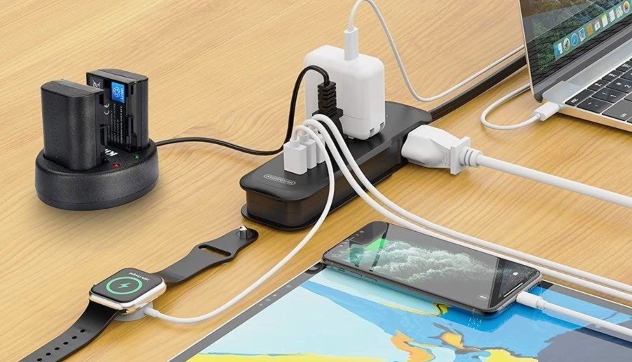
January 30, 2023
The Best Travel Power Strip of 2023
Travel power strips make traveling so much easier because they save space, are lightweight, and have great features!

November 23, 2022
The Best USB-C Portable Charger for 2023
We've listed the best USB-C portable chargers to help keep all of your devices charged with the help of a simple cord.






